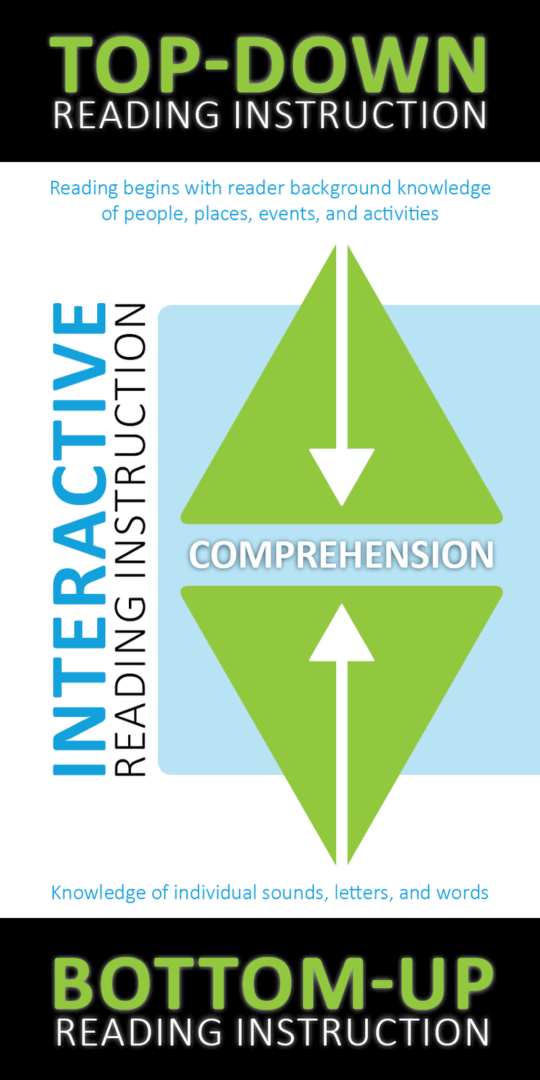How to best teach Hebrew reading is one of the most controversial topics in education, leading to a great debate that has been ongoing for decades.
Educators are so passionate about the issue and for good reason because everyone recognizes how critical literacy is for one’s emotional, academic, and professional well-being. There’s a heavy price to pay for poor foundational reading education, so we all want to make sure we are doing it right.
Much of the controversy concerns two methods of early instruction: the structured literacy approach and the language-based approach. The first zooms in on letter-to-sound correspondences so children can learn to sound out words. The second views the bigger picture, focusing on the meanings of written words in the context of a sentence or story and aims for an immersive language environment.
These approaches are rooted in the two main literacy models: Bottom-Up and Top-Down. They’re both important, but have limitations when used independently.
The Bottom-Up Model
In the world of Hebrew instruction, many educators favor the Bottom-Up model, which exclusively uses a structured literacy approach by first teaching the letters, then vowels, then syllables, then words, eventually building up to fluent reading. This aligns nicely with the traditional mesorah for teaching the Hebrew language and has become the most commonly used method of teaching Hebrew reading. The idea is that systematically building reading skills from the bottom up will give children the decoding abilities necessary to be able to read Hebrew smoothly.
The issue with this model lies not with mesorah’s method itself, but in the fact that this approach is often used in a vacuum, without sufficient opportunities for children to make linguistic connections between speech and text. This results in a disconnect between oral and written language. When they are only conditioned to hear the language on the syllable level and not on the word or sentence level, many children may not even realize that the Hebrew language conveys meaning.
Additionally, for reading practice, children are often given pseudo words mixed in with real Hebrew words and are tasked with just getting the sounds off the paper quickly and correctly. The unfortunate, and even tragic, outcome is that children view Hebrew as gibberish, a language that doesn’t make sense. And while some children may learn to read quickly, they aren’t learning to understand or connect to what they are reading.
The Top-Down Model
On the other side of the spectrum, the Top-Down approach focuses on exposing children to the Hebrew language, learning Hebrew stories and songs, and stresses the importance of having a Hebrew-speaking educator in the classroom. This immersive learning environment emphasizes teaching through authentic literature, and children pick up the language through exposure, gaining a rich Hebrew culture and experience. With consistent and meaningful exposure to the language, children should begin to understand and then produce the language on their own. This is the mainstream method used in Israel, where most children reach the ceiling for accuracy by the end of 1st grade.
While this method may work for some children, there are several limitations to it as well. Children end up becoming dependent on the educator to gain exposure to the language, and it takes a lot longer for them to grasp enough of the language to be ready to read, let alone read independently. Not all children are able to effectively learn this way, especially if Hebrew is not their first language or if they struggle with any sort of learning challenge.
So which model is more effective?
The truth is, when understanding the bigger picture of literacy learning, we recognize that they are both equally valuable, and each one actually enhances the efficacy of the other. For the ultimate literacy instruction that will benefit all learners in all capacities, both approaches are needed.
And that is the magic of Hebrew Scouts.
Our goal is to provide proper, effective instruction from the very beginning, and to do that, we integrate both models.
Hebrew Scouts is a structured literacy curriculum rooted in Torah mesorah that emphasizes all four components of language (listening, speaking, reading, and writing), which aligns with the language-based model, and builds up skills through exposure. Focusing on both oral and written language, Hebrew Scouts systematically and sequentially teaches Hebrew reading and language from the bottom up, while providing a rich, holistic Hebrew experience that harmoniously works together with it from the top down.
Literacy research actually suggests that when used together, a language-based approach and structured literacy approach work in harmony to provide students with a much more well-rounded foundation for reading success. Good reading abilities are dependent on decoding skills and language comprehension abilities and work together for reading success (“The Simple View of Reading” – Gough & Tunmer, 1986).
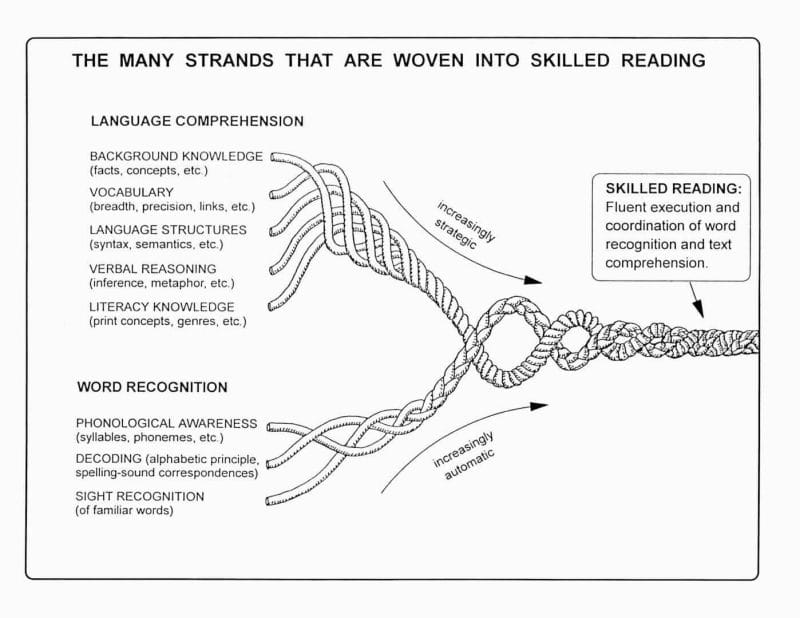
The language-based approach helps students develop a deep understanding of language and its uses, while structured literacy provides them with the phonemic awareness and decoding skills they need to read words accurately and fluently.
In designing our curriculum, we took inspiration from Scarborough’s Rope, a well-known reading model that contains two main types of skills: language comprehension and word recognition. These two main elements are composed of eight individual strands of skills, including; decoding, phonological awareness, vocabulary knowledge, and more. Woven together, these strands become the rope that represents complete reading fluency. All of the components are interconnected and interdependent, and build on each other for fully comprehensive instruction. This rope model highlights the value and necessity for both approaches to reading instruction, and more importantly, the need to integrate them together for ultimate success.
Every one of the eight strands of the rope holds a critical skill that children must develop in the reading process, but which is simply not supported by either of the reading approaches individually. For example, sight recognition, or recognizing familiar sight words, is essential for skilled reading. Sight words are learned through repeated exposure to a word in a meaningful context in order for a child to connect the meaning of a word to the word itself. They need to learn to process the letters quickly and sequentially and be able to eventually recognize the word instantly for smooth reading. In the structured literacy approach, children are not getting to use real words in context enough times for them to convert them into sight words. In the language-based approach, children aren’t spending time learning how to properly read through words, but rather end up memorizing them. When forced to compensate by over-relying on context, language structure, memorization, and other clues in order to read, children eventually reach a point where they can’t memorize any more words. Without the key skills of reading syllables and decoding words, they will never be able to achieve full reading fluency.
Here are some examples of how the strands are woven throughout our curriculum:


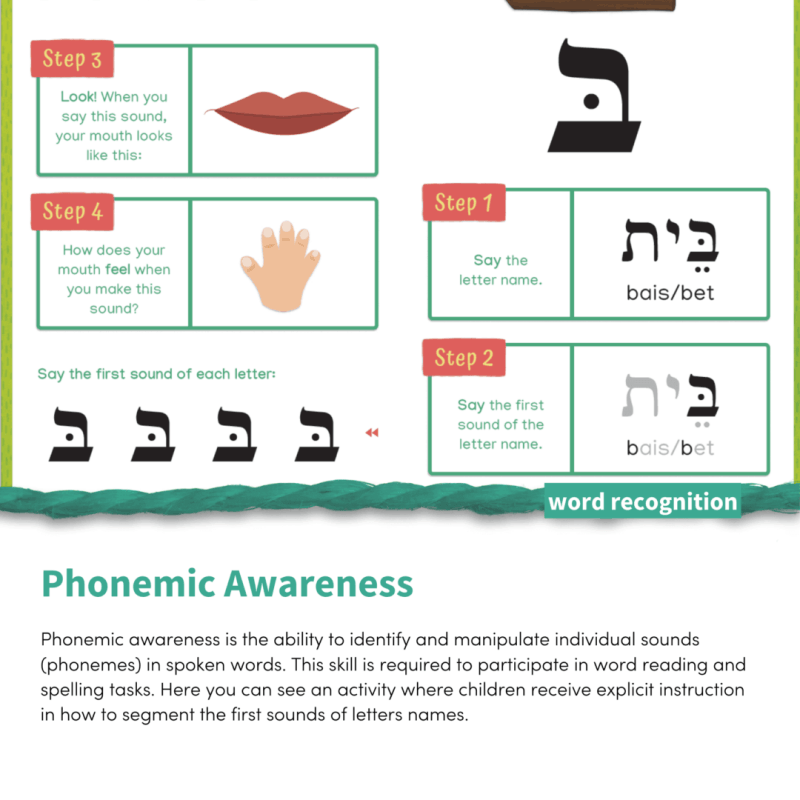

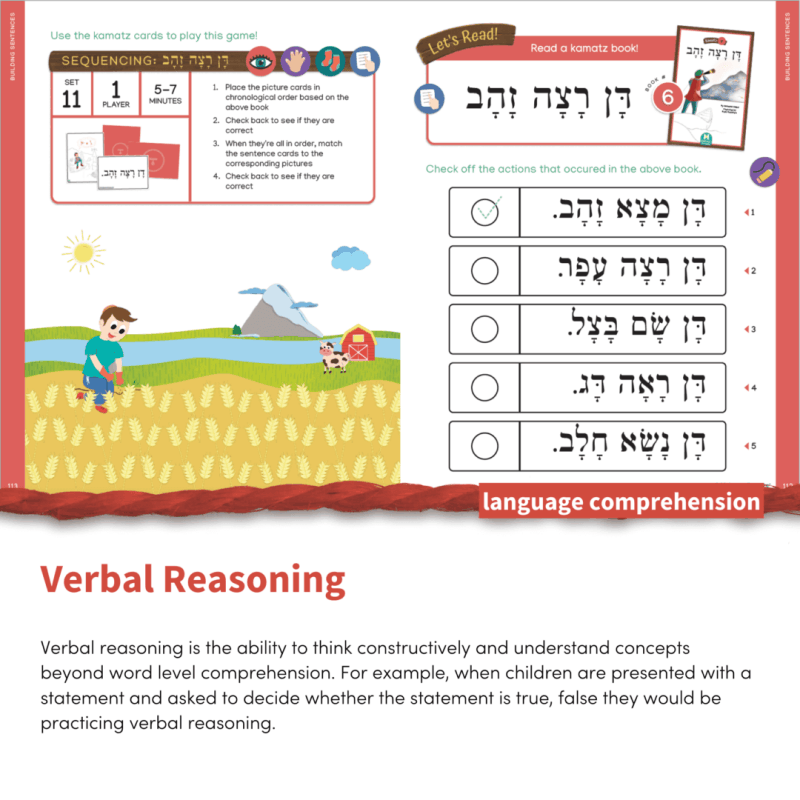
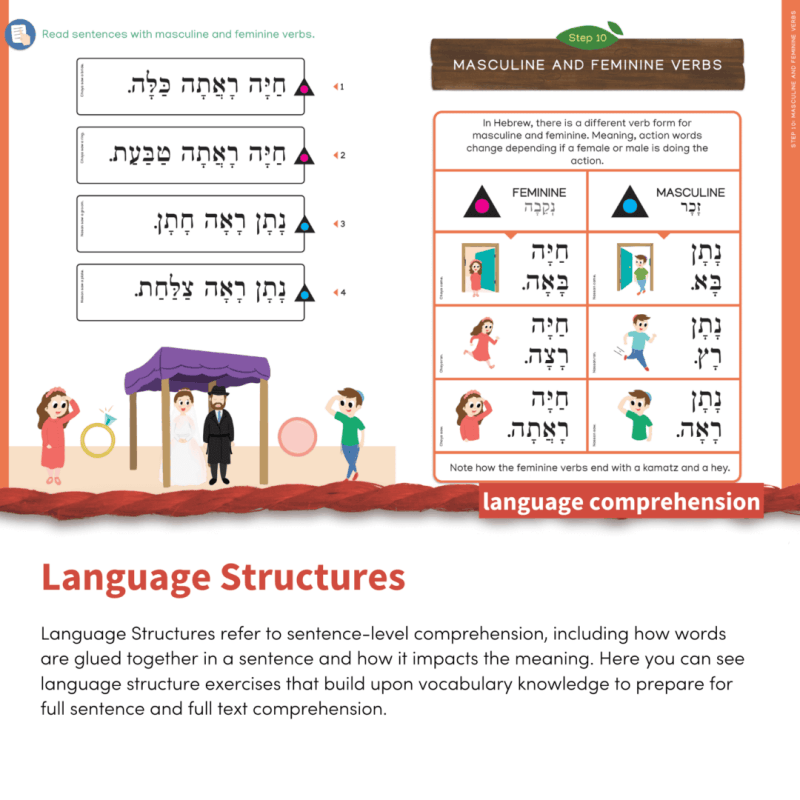
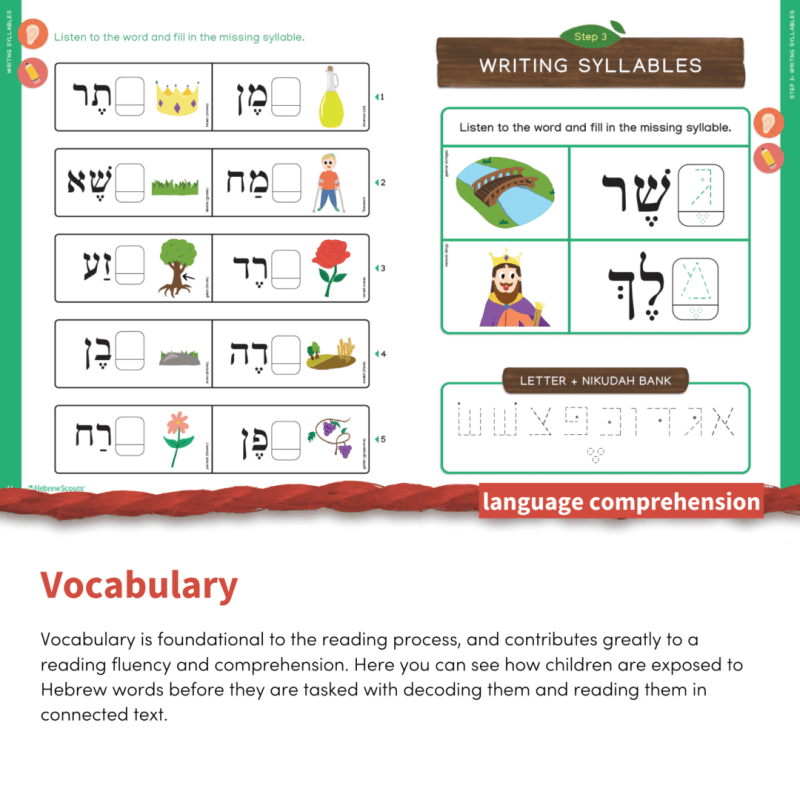
At Hebrew Scouts, we created a system that thoroughly applies all of these critical skills found in both approaches. Our form of instruction helps children systematically acquire strategic and fluent skills for all the strands of the reading rope. We also want them to connect to Hebrew as the language of the Torah and help them find pleasure and meaning in it as they learn to read fluently. By combining all the best literacy theories, Hebrew Scouts delivers the best of both worlds and ensures the most comprehensive reading experience out there!

